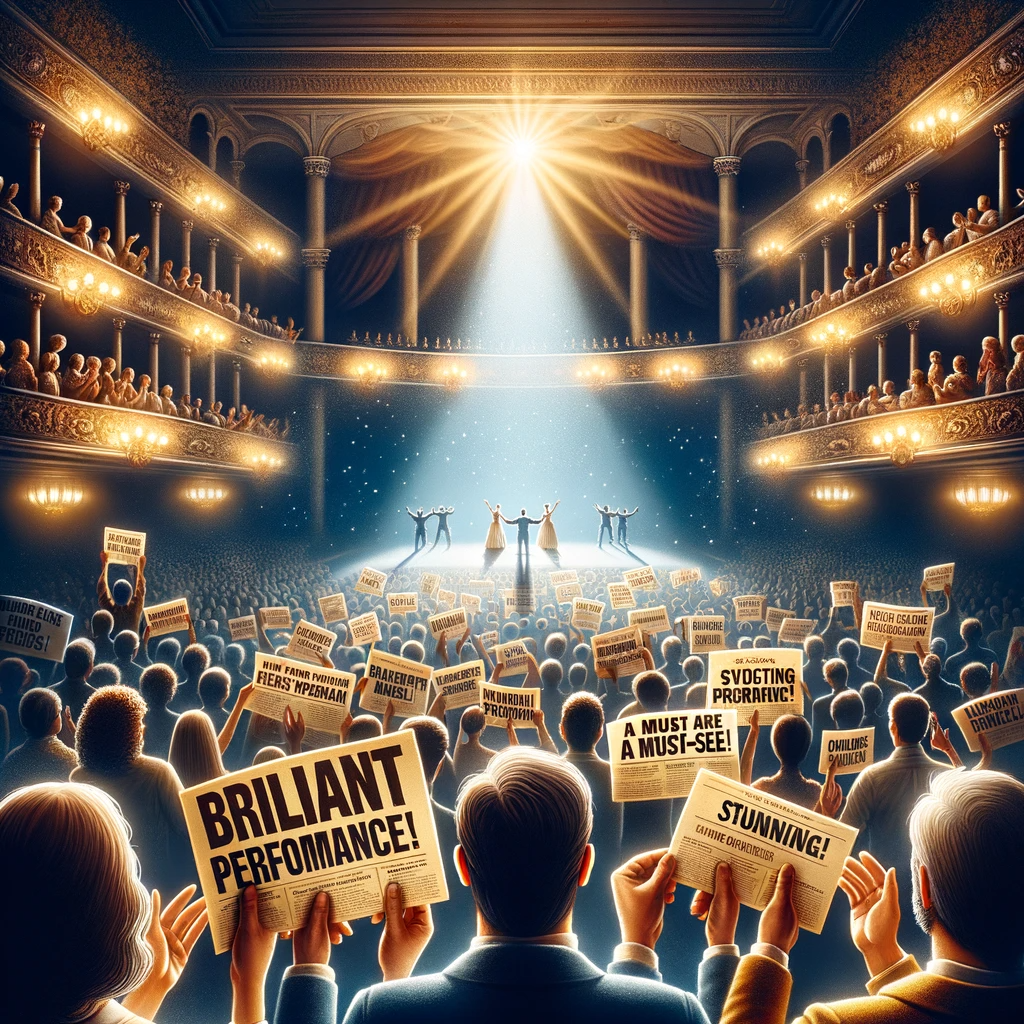In the radiant afterglow of a stage performance, as the sound of applause cascades through the theater, there begins a new act—the act of reflection and critique. “Applause & Reviews” is where the immediate emotional responses of the audience meet the analytical dissections of critics, creating a chorus that reverberates through the halls of theater long after the curtain has fallen.
The Standing Ovation: A Collective Tribute Applause is the audience’s most immediate and visceral review. It’s a collective tribute, a shared pulse of appreciation for the performers and creatives. But the resonance of this applause extends beyond the theater walls—it’s the first note in the melody of a show’s legacy. “To stand and clap is to speak without words,” muses veteran theatergoer Margaret Liu. “It’s to say, ‘This moved me, this mattered to me.'”
The Critical Voice: Reviews as Reflection As the echo of applause fades, the reviews take center stage. Reviews are not just critiques; they are reflective narratives that contextualize a performance within the broader spectrum of theater. Seasoned critic James Keller asserts, “A review should capture the essence of the experience, the triumphs and the missteps. It’s a mirror held up to the show, reflecting its image back to the world.”
The Art of Articulation: Writing Reviews Writing a theater review is an art form in itself. It demands a balance of passion and impartiality, an understanding of the art’s history, and an eye for innovation. New critic Sophia Martin explains, “My job is not to pass judgment but to articulate the experience, to dive into the ‘why’ of the emotions stirred by the performance.”
Beyond the Stars: The Nuance in Rating In a world accustomed to star ratings, the nuance in theater reviews is critical. A four-star review doesn’t capture the gasp of the crowd at a perfectly executed monologue or the collective silence at the play’s climax. “Star ratings are a guide,” admits online reviewer Elliot Vaughn, “but the real substance is in the description, the storytelling of the review.”
The Dialogue with the Public Reviews are a dialogue with the public, an invitation to engage with the performance beyond the initial viewing. They spark discussions, fuel debates, and sometimes, they challenge the audience to see the performance through a different lens. “I read reviews to relive the show, to see what I might have missed,” theater enthusiast Rachel Gomez shares.
The Impact of Critique For the artists and creators, reviews hold a different weight. They can be affirming or devastating, and often, they are a tool for growth. Director Thomas Kline notes, “Every review is a lesson. Positive or negative, they make us think, reflect, and strive to be better.”
Applause & Reviews: The Encore Ultimately, “Applause & Reviews” serve as the encore of every performance—the ongoing conversation about the work. It’s where the ephemeral becomes eternal, where a single night’s performance can ripple through time, influencing future productions and the memories of those who witnessed it.
In the grand theater of life, “Applause & Reviews” remind us that every performance, no matter how fleeting, has the potential to echo indefinitely. They are the critical chorus in the symphony of theater, a testament to the power of performance and the enduring conversation it sparks among us all.
This article is crafted to highlight the significance of audience reactions and critical reviews in the theatrical experience, illustrating how they contribute to the dialogue around a performance and shape its place within the cultural landscape.


